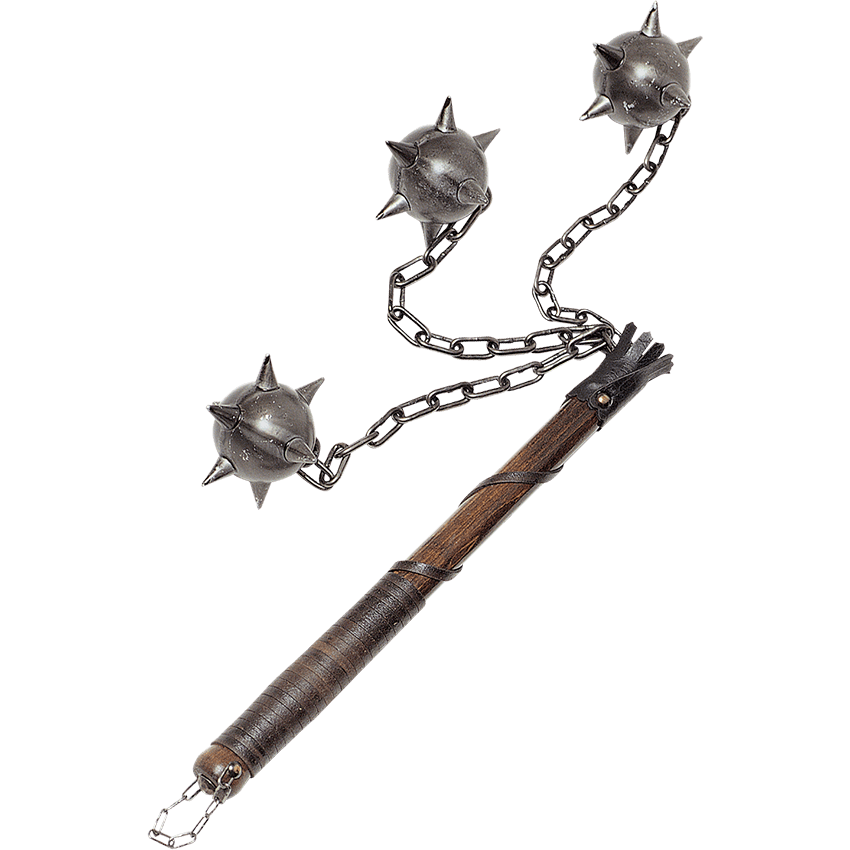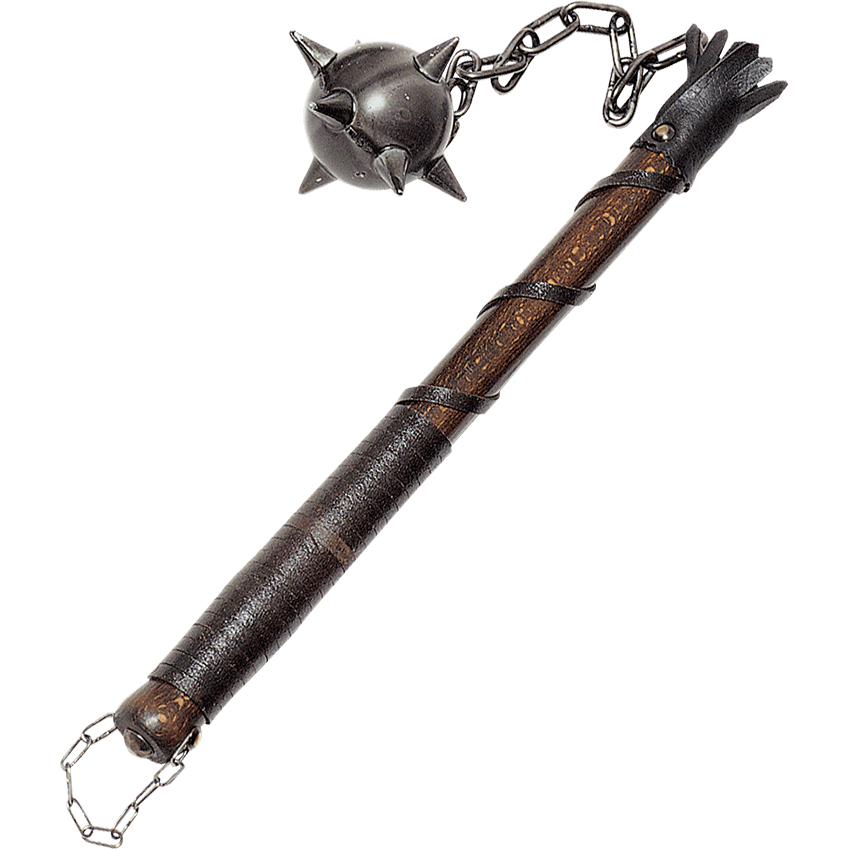

But which of these flails packs more of a punch? Assuming that the single ball possesses the sane mass as the three smaller balls combined and all chains are the same length, which would be the ideal weapon for crushing your opponent in the likely event of trial by combat? This question has no simple answer. Luckily, physics can help us decide!
First let us examine the flail design as a whole. It exists as a mass on the end of a chain attached to a central rod. Torque is produced from the rod and the mass on the end of the chain picks up angular momentum. We will assume the chain in this case is massless. If the same net force is applied to both flails, the sum of the momentums of the three smaller balls Mvr=(m1vr+m2vr+m3vr) will equal the momentum of the single larger ball . However, this is assuming friction is nonexistent, which is not the case. The three chains on the three ball flail would lose three times the amount of energy to friction as the single ball flail, both from the rotation from the rod air resistance interacting with the chains. To maximize your hits and make the most efficient use of your energy I would recommend the single ball flail because even the smallest bit can make a big difference with repeated hits!
No comments:
Post a Comment
Note: Only a member of this blog may post a comment.